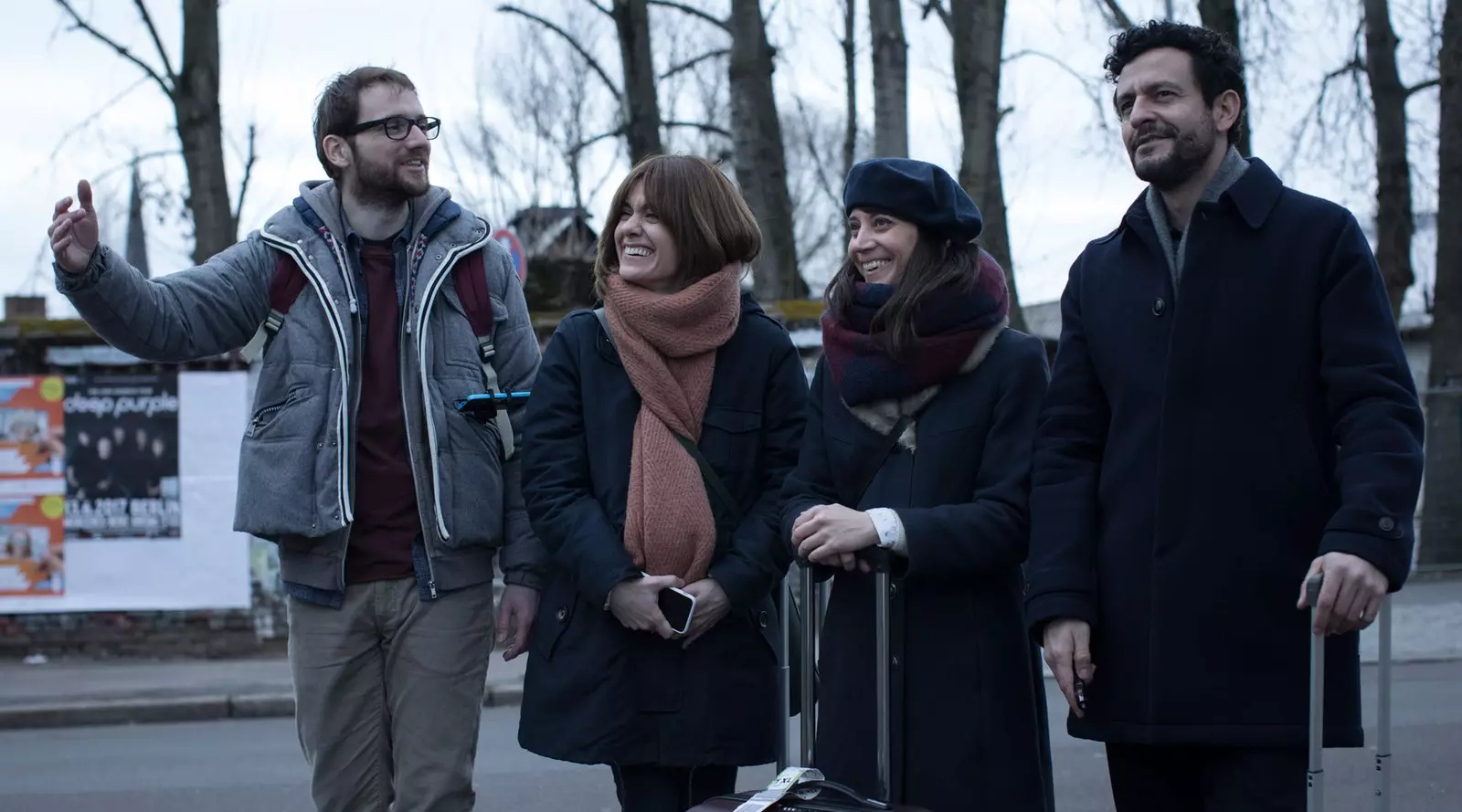
A surprise visit...maybe not such a good idea.
Four friends in their mid-thirties (closer to 40 than 30) stand up a winter weekend in Berlin. They want to accompany the fifth of the gang, Comas (Miki Esparbé), on his 35th birthday, although they haven't told him.
Comas went to live in Berlin two years ago, attracted by his art scene, by that cool, carefree and free air that calls us all , and the four colleagues from the university are planted there by surprise.
Nevertheless, Comas does not lead the idyllic life that he dreamed of or transmits. The other four friends, still living in Barcelona, either.
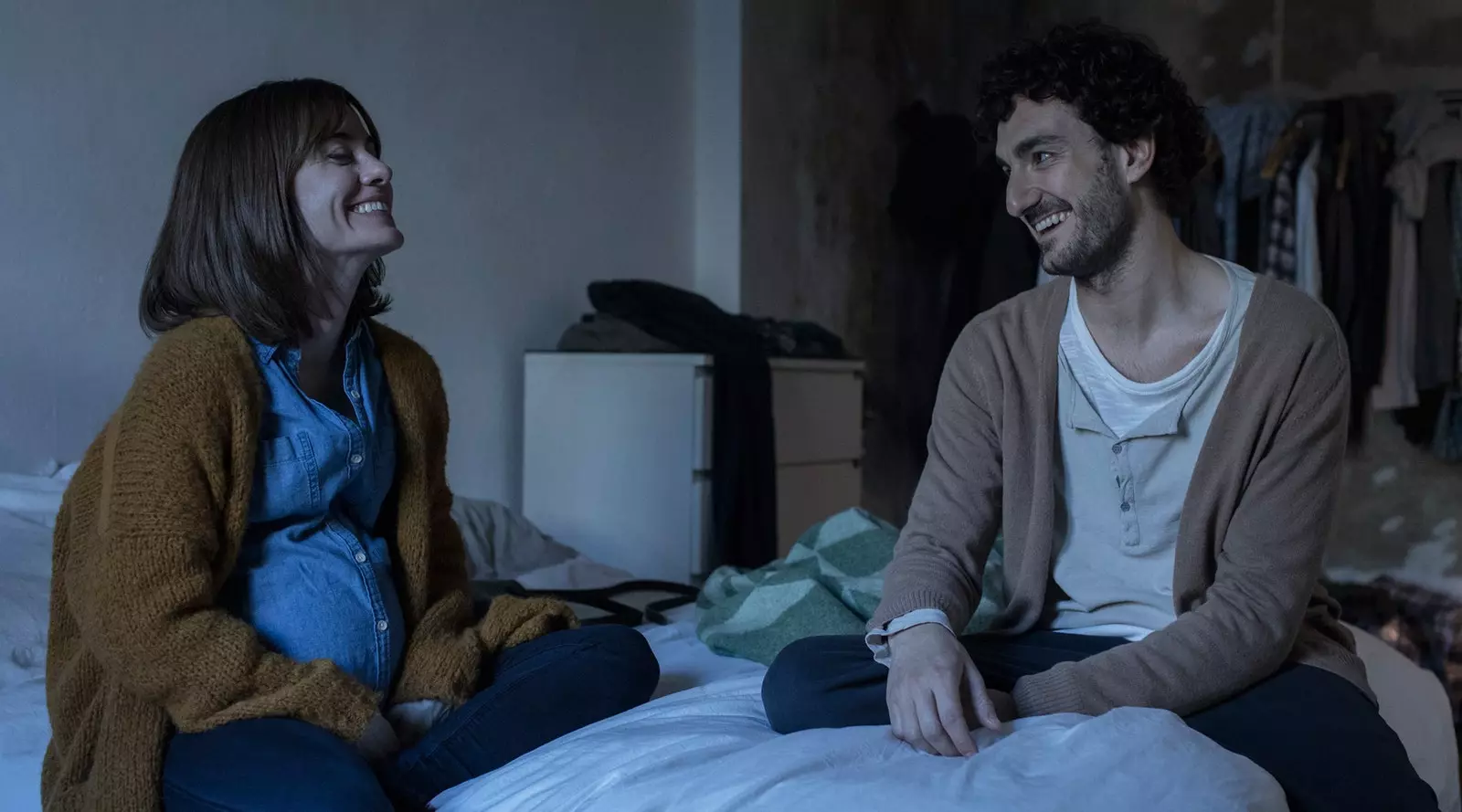
Reunions in Berlin.
That's the premise of The distances, the second movie of Elena Trape (Blog) , winner of the last Malaga Festival. A story that speaks of that generation that, in recent years, in their twenties, went to live abroad not only for economic reasons, but also artistic, professional, and personal growth.
People who wanted to leave at that precise moment of change in their lives, in which it is time to climb one more step and that, over time, he found himself stalling or even going back down the stairs. Away or away from home.
Trapé, who spent four months living in Berlin, wrote the script in that city , where she always imagined her characters in this existential rupture.
"It was always Berlin for various reasons," she tells Traveler.es. “On the one hand, it is a city that fascinates me, that I know and to which I have traveled very often. My first time in Berlin was in 1998 and, really, I have seen the city change, I have had friends living there. It seems to me a very peculiar place”.
In those four months she lived it more and she found the geographical coherence for the character of Comas. Berlin is the emotional and physical scene of this flight that many staged.
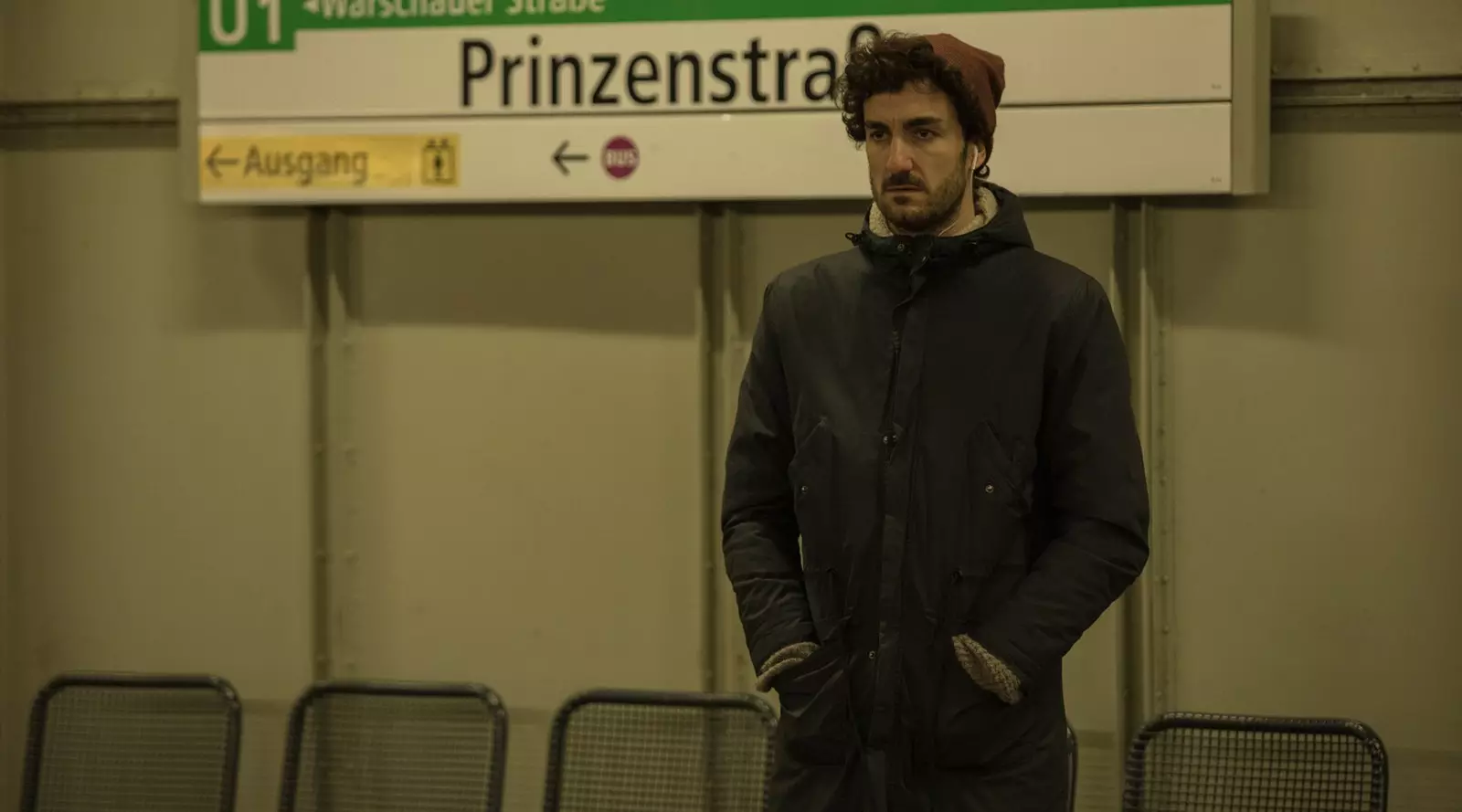
Lost in the city.
“Berlin was the city where a character like Comas could continue to exist, in the sense that until recently it was the last affordable European capital”, explains the director.
“In the years 2000-2002 It was the city you went to if you had certain artistic aspirations, photography, graphic design… It was the place where a lot of things happened, the whole theme of club culture, music, people from many places," she says.
"Berlin is not exactly German, it has a special profile because it has been a city that welcomes very particular people, it is a city where there is relative freedom, within a series of things, and then you could live with little money, in quotes, you could have a stable and reasonable rental contract. It was the place where a character like Comas could continue a life without making big decisions and a bit at a standstill. It's not like London, New York or Paris, where if you don't succeed, depending on what level, the city expels you " Trape reflects.
However, and as Elena Trapé herself has experienced and shows in Distances, Berlin has also begun to expel her.
She lived there for four months in 2011 to write the script and when she returned to shooting in 2017 a “very changed” city was found. “On many levels: the impact of gentrification has greatly changed the landscape of certain neighborhoods in the city and, even, the acceptance that this has had in the face of the Berliner and his relationship with the tourist”, she says.
“I have noticed a lot of tension on the part of people in certain areas, getting upset because you are speaking in English, not responding to you… There is a certain tension, because with gentrification rents have risen, things that were new for the Berliner. I think this is the time I have noticed a more significant change in Berlin, There are no longer cheap flats and I think that spirit of welcome that the Berliner had has been lost”.
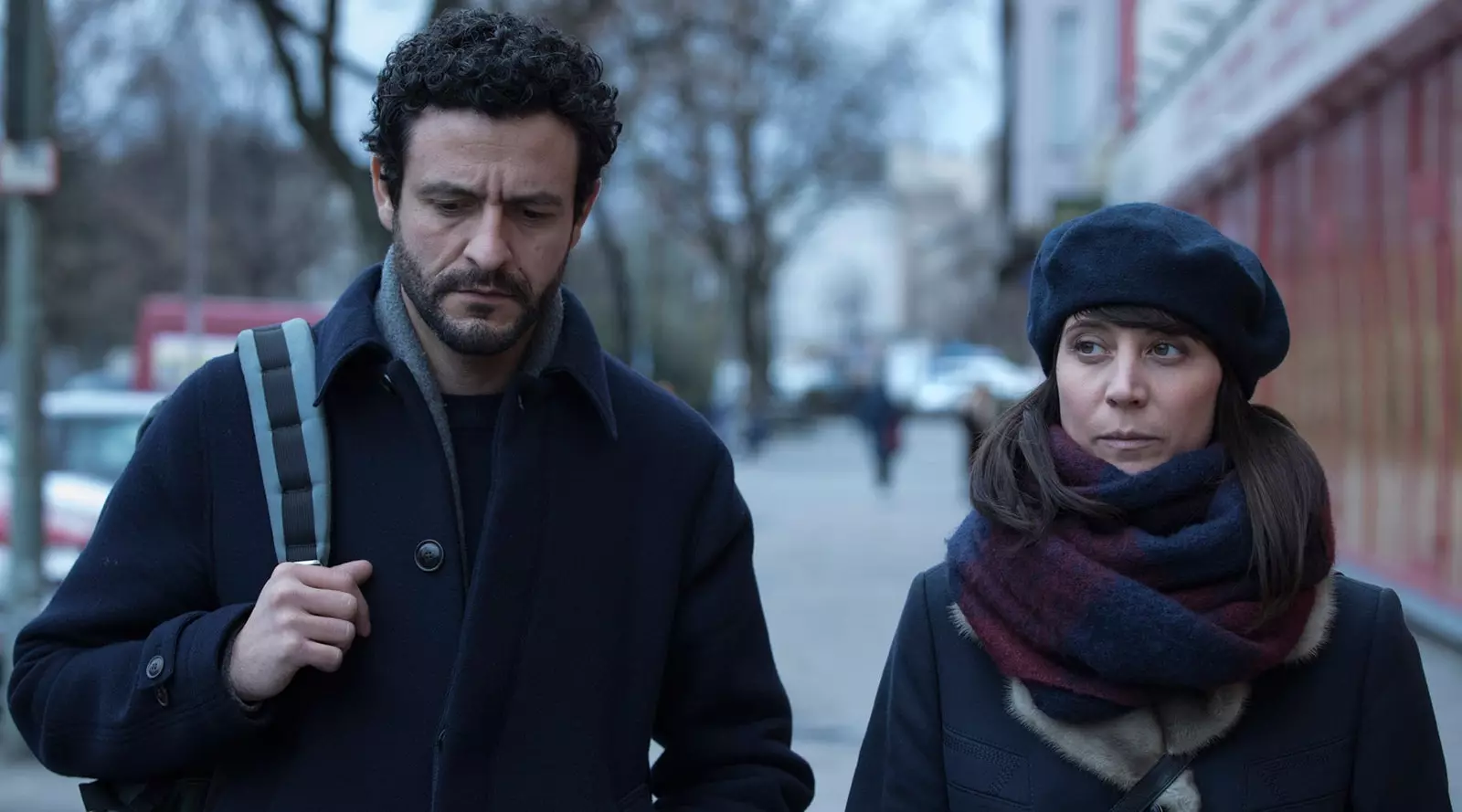
Berlin in winter is another city.
Based on all this, she built the life of Comas, her 'adopted Berliner'. Fleeing from “the most touristic or obvious routes”, she found the locations for the film when she lived there. “I didn't want a set or fake them,” she says.
“Inside my head, Comas began living in Kreuzberg [where she also shot some scenes], she left there when the rent prices got complicated and she went to live in Friedrichshain, a neighborhood I chose because I wanted to shoot a sequence in karl marx allee which is one of the streets that I like the most in Berlin; and wanted them to go to Potsdamer Platz flea market also".
Furthermore, Trapé decided to shoot in winter not by chance. “Berlin is a city that changes a lot from season to season. Berlin in winter hides, it's a dark city, It is not a city that you can get to and go to the historic center where you can walk around. Berlin is divided into neighborhoods, the center is quite bleak, there are very dark areas”.
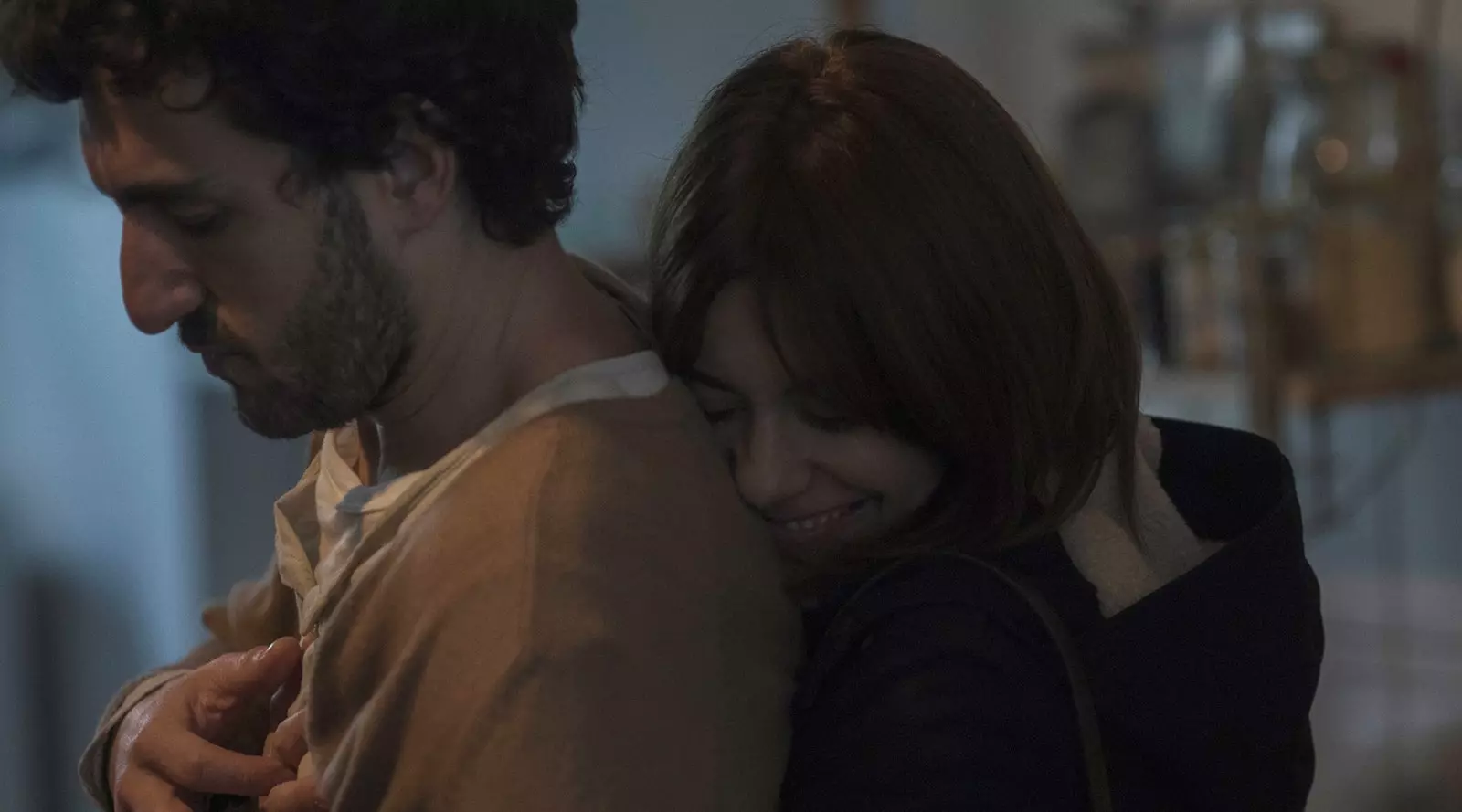
Shortening distances...
It was the perfect setting for everything that the five characters live and have to face on the weekend in which the film takes place. That cloudy and cold mirror of reality, of a future not as ideal as imagined years ago, more melancholy.
The “feeling of restlessness, of being disoriented, of not knowing where to go” that Elena Trapé wanted to tell and that the city added. Berlin is cool and full of culture and life, but… "You don't feel welcome, all those nuances that are also in the light of the city interested me a lot," he says, "they were the perfect visual complement for the film."
